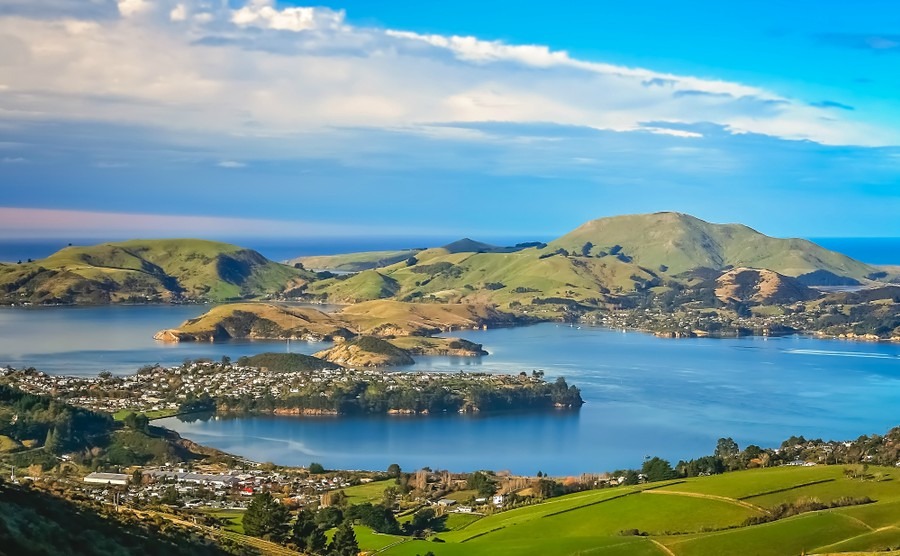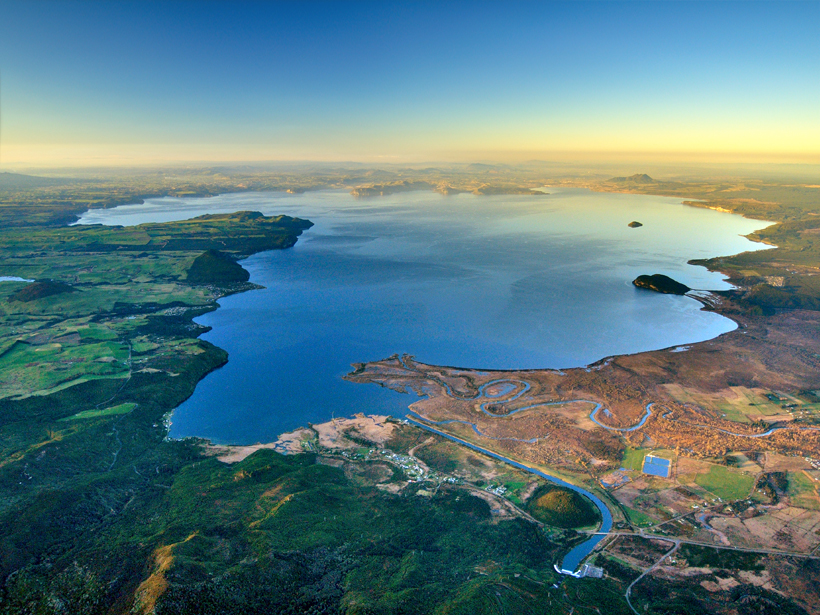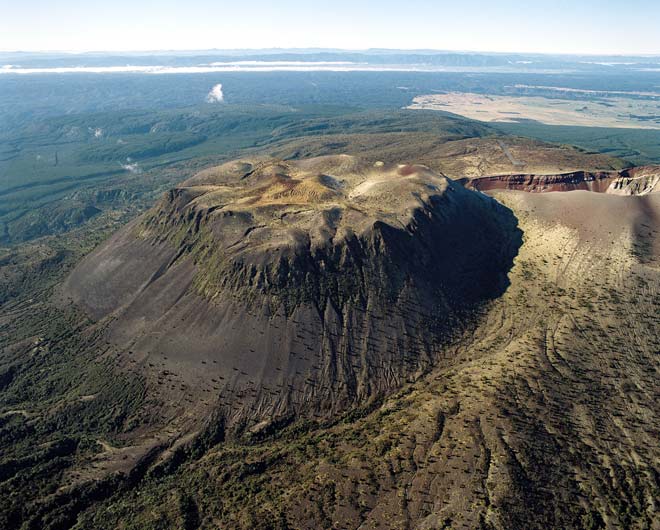Akoranga 11 Mahi Tuatahi 🔗
- Collect a terms/definitions match-up from the front
- Cut up the terms/definitions
- Glue them into your book in the correct order
- Put all un-crumpled excess paper in the recycling bin
Te Whāinga Ako 🔗
- Dome, caldera, cone and shield volcanoes - what each looks like, linked to an example and the type of magma it has.
Head up a new page with the date and te whāinga ako.
Volcanoes in New Zealand 🔗

- The type of volcano which forms depends on the magma type
- The viscosity of the magma largely dictates the shape of the volcano
🔗
- There are four main types of volcanoes in New Zealand:
- Shield volcanoes
- Caldera volcanoes
- Lava dome volcanoes
- Composite cones (stratovolcanos)

Shield Volcanoes (Basalt) 🔗
- The flattish gently sloping shield volcanoes of Dunedin and Christchurch are built from basalt
- The Dunedin volcano was active 10-13MYA, and the Lyttelton/Akaroa volcanoes 5.8-13MYA
- They form because low viscosity lava can flow a great distance before solidifying into solid rock

- Built of silica-poor basalt magma
- Magma comes from the mantle, about 100km deep - the hot spot. But they can also be formed by subduction sometimes.
- The magma has very little water or dissolved gas, so eruptions are very gentle.
- Eruptions are also gentle because the magma is runny and very hot, therefore it travels a long way before cooling. Therefore the volcanoes build up with very gentle slopes.
Caldera and Dome Volcanoes 🔗
- Formed from viscous rhyolitic magma which is very viscous because it has a high amount of silica.
- Gas, especially water vapour and carbon dioxide from melted carbonates, gets trapped in the sticky lava which results in very explosive eruptions forming calderas.
- Sometimes the gas escapes so that the magma is still very sticky without trapped gas. This forms dome volcanoes.
Calera Volcanoes (Rhyolite) 🔗

- Some volcanoes are very wide flat areas which completely collapsed following huge eruptions to form calderas (e.g. Lake Taupō).
- The eruption would have been extremely large and violent.
- Taupō last erupted about 186AD.
Dome Volcanoes 🔗
- Mt Tarawera also formed through sticky magma being pushed upwards very slowly.
- This upward pressure is due to gas.

Cone Volcanoes (Andesite) 🔗
- Steep cone volcanoes like Mt Taranake and Mt Ruapehu are formed when alternating layers of slightly sticky andesite lava and ash build up a cone around the vent.

- Typically formed at subduction zones
- Made up of andesitic lava which has an intermediate amount of silica
- The lava is semi-sticky and cooler. This means that it is not so runny and that it cools more quickly.
- The combination of these two factors means that it does not travel as far and forms cone shapes.
- Eruptions can be gentle, erupting lava, or explosive, eruption hot ash.
Rangahau/Research 🔗
- Cut out each of the images of the NZ volcanoes. Glue into your book and label - 2 per page
- Next to/underneath your images, write:
- A description of the general shape of this volcano
- How it forms
- The magma type
- The typical products of the eruptions this volcano has
- Any special features this type of volcano has
- Other examples in NZ
NB: Use your device + textbook pages to help